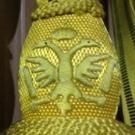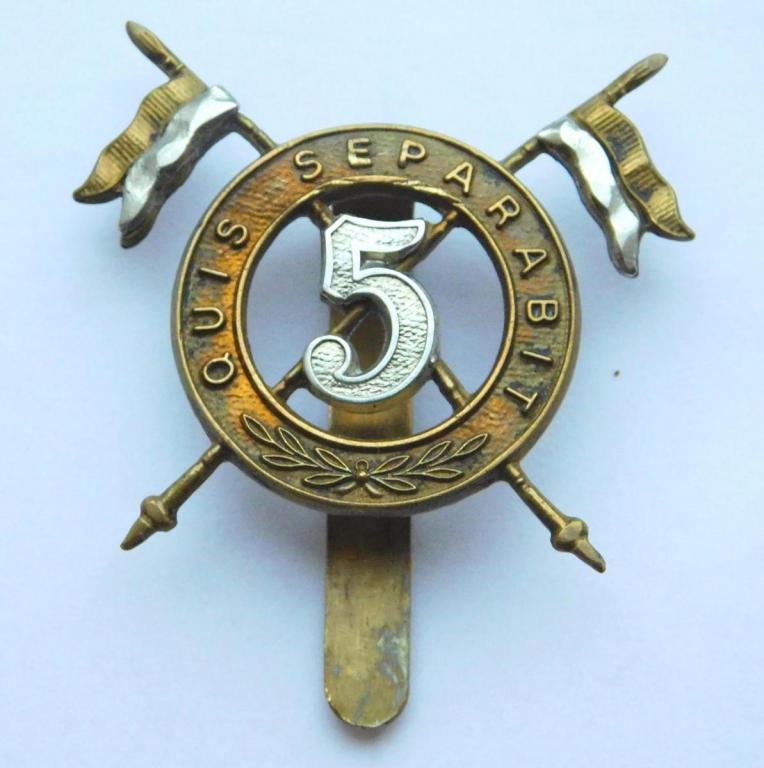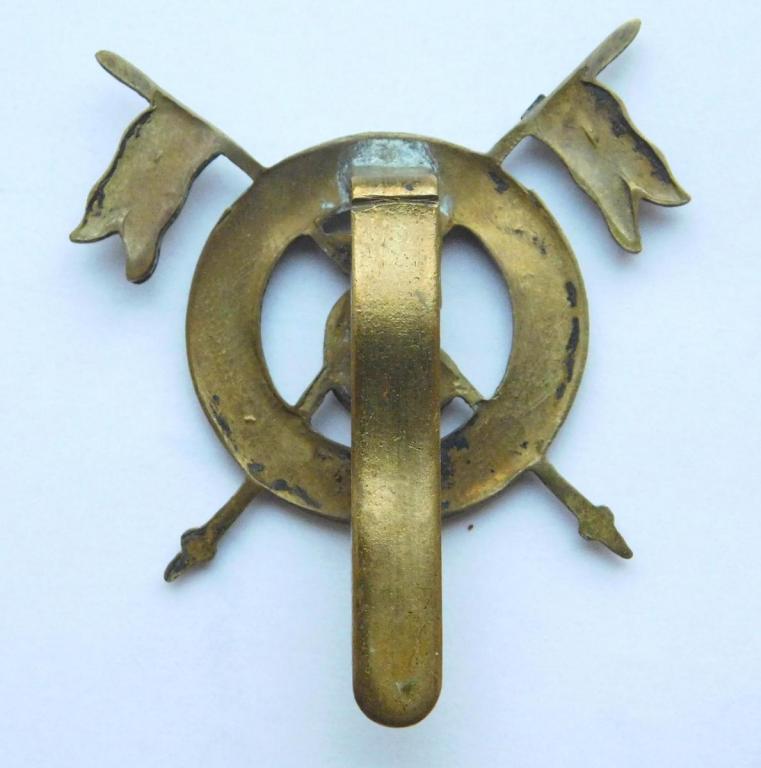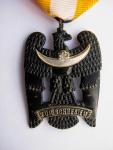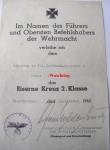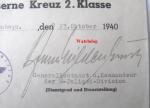-
Posts
36 -
Joined
-
Last visited
Watchdog's Achievements
-
Thanks Tony, Yes you are correct about the glengarry being the plain so called "Cameron pattern". As I say, I can find no reference whatsoever to the Seaforths having a different pattern cap badge for pipers but I am aware of "folklore" that suggests a variant of the standard badge exists with four lugs rather than three or the later two. I appreciate the input. Regards Mark
-
Looking for a new project I settled upon the often distinctive cap badges worn by pipers in many regiments and realised I had a gap in my knowledge. Pipers in many units have traditionally worn either an officers pattern or totally distinct cap badge. I have quite a few examples in my collection but now realise that I am not sure whether the Seaforths were one unit that bucked the trend and their pipers wore a standard pattern badge. Does anyone here know the answer and if so is able to show an example of what was worn if not the standard badge together with any corroborative evidence? Please help, it's driving me nuts! Regards Mark
-

RMP cap
Watchdog replied to Markgraf's topic in Great Britain: Militaria: Badges, Uniforms & Equipment
Here's another very overdue comment. Yes that cap could be considered a "dress" item as it (still) is worn with the No1 Dress (Blues) ceremonial uniform but also the No2 Dress (Khaki) which until recent years was worn as a duty order I remember that well. Very early flak jacket (some of the first were actually ex-US of Vietnam vintage) and the red cravat worn at a time when both First and Second Regiments of RMP were in NI. if memory serves it was 2RMP who wore the cravat (I know I didn't and I was 1RMP). They eventually ended up in Berlin whilst 1RMP remained in Lisburn until final withdrawal. -
Watchdog started following Royal Highland Fusiliers TOS?
-

Royal Highland Fusiliers TOS?
Watchdog replied to Chrisnp's topic in Great Britain: Militaria: Badges, Uniforms & Equipment
Good evening gents, I have been a discrete "reader" here for a while and must admit I have not posted as much as I should for one as enthusiastic about the hobby as I am. Sorry, no excuse other than time v work etc! I know this is an old thread and Reg above would have perhaps been the ideal person to anwer my question but he seems to have gone the same way I did! I have been a collector of British cap badges etc since the early '70s and I spent two years in the same garrison as the RHF but despite this I have a question that I can't answer. Simply put, did RHF pipers ever wear a tartan patch on the TOS other than McKenzie (red Erskine maybe) and if so was it only with the white hackle or plus the pipers cap badge? As I said I spent two years in pretty close contact with the RHF but for the life of me I cannot recall ever seeing a piper wearing anything other than a blue glengarry and cap badge in working / barrack/ combat dress let alone a TOS with other thanMckenzie tartan patch. Is my memory failing me? I have looked at every source I can think of including dress regs but no conclusive answer so far. Any help is greatly appreciated. Regards Mark -
Thanks Mike I appreciate the input. I bought my copy of K&K close to 30 years ago and it is a great publication but as you know it does not show the reverse of the badges nor does it cover much of the small details that make the difference between original and fake. As I say, I do like the overall appearance of my badge I just can't seem to pin down the differences in construction from say Victorian to WWI to WWII and post war that are very telling when it comes to authentication. Thanks again Regards Mark
-
Good afternoon gents, I am much more a reader than a poster here mainly because there are only so many hours in a day rather than me not being inclined. I have collected British military cap badges since the early '70s but for most of that time my attention has been focussed on the infantry regiments. As I have begun to add the cavalry regiments over the last few years I have long been a little uncertain of the various badges on the market from The 5th Royal Irish Lancers. I may be looking in the wrong places but I have searched here unti my eyes hurt and I can't find a single thread concerning the badges of this unit and only a couple that refer to it in another context. So, I am hoping that there is the wisdom here that can give me chapter and verse on the badges of this fine old regiment. I have for some years held an example in my collection which I regard as a "gap filler" repro because whilst it has apparent age, applied white metal lower halfs of the guidons, applied white metal '5' and a tool mark on the slider it has a flat back which I have always believed is not correct in a genuine badge. Looking over several sources and dealers lists I have seen wide variation in physical characteristics and price (low double figures to low three figures). I have even seen a very new looking item purporting to be an officers badge all in white metal, very flat back and a very modern looking "STERLING SILVER" stamp for the same price as a the most common WWI brass economy badges. OK, that's an extreme example but you get the idea. Apologies for the poor pictures but the light is dreadful here at the moment. I would hope to gain some knowledge from other members here and to complie a visual reference as to real versus fake across the variations (including officers badges) to help anyone else with the same question.
-

RMP cap
Watchdog replied to Markgraf's topic in Great Britain: Militaria: Badges, Uniforms & Equipment
Thank you I appreciate it. The correct chinstrap is the one in the post by Ironduke although it would never be worn (for long) in that colour as the heavy application of dark brown polish would see to that! These caps were actually worn by RMP until 1974 (not 1968) when replaced by the red beret (the publicity blurb said "In order to fit long redcaps into short cars" coinciding with the introduction of "saloon" cars in lieu of Landrovers for garrison policing) however, they did hang around in use in Northern Ireland for a while longer. Oh and the red "duster" was required to have creases pressed into it. not always the same in every unit but generally if memory serves it was 12 either side of the centre. That was fun when you were knackered and just wanted to chill out! Regards Mark -

RMP cap
Watchdog replied to Markgraf's topic in Great Britain: Militaria: Badges, Uniforms & Equipment
I see this is an old thread but I just came across it whilst looking for something else as I am much more a reader here than a poster (only double digits in about ten years!!!) However, I just had to comment on the cap badge which is possibly the worst fake I have ever seen posing as a real one!!! The chinstrap too is at best a pretty modern one. The correct issued type for these hats came in a light tan colour and was made brown with dark brown polish vigourously "bulled" into it. I Believe this type is a modern version still issued to the Household Cavalry and a couple of other units still using these caps. The cap itself looks good and probably from about WWII up to 1960's in date. Before anyone says "how do you know with such a low post count"? I served 24 years regular army most of which was with RMP and I wore one of these hats in Northern Ireland in the '70s. Plus I have been a collector of British cap badges etc since about 1973 so I have seen a few. :-) Regards Mark PS I'll go back under my rock now! -

My EK is oxidizing..
Watchdog replied to kapten_windu's topic in Preservation & Restoration of Military Artifacts
I agree that Renaissance Wax (this is a brand name) is good and highly thought of in many areas of artifact conservation but I doubt you would find it except by ordering it on the internet whereas I believe something like Vaseline (a petroleum jelly meant for topical application to human skin) should be available in your local pharmacy. First remove the surface rust with something like a toothbrush, nothing harder!. Ensure that the medal is 100% dry. Then, using the cleaned and dry toothbrush apply a very small amount of Vaseline and brush it into every feature of the medal. Leave the medal in a warm dry place for a couple of hours then wipe it over with a clean piece of lint-free cloth. You should notice a great improvement and the rusting should not progress. The trick is to use only a very small amout of Vaseline and not leave a visible residue. Some people do not like this method as some badges may look a little darker afterwards but any kind of oil etc will produce a much mor pronounced effect and will attract dust. If the Vaseline method is done lighly enough it will be barely noticeable on an EK and it is easily removed without causing any damage. I hope this helps. PS Vaseline is virtually the same as Cosmoline but much lighter and with slightly different ingredients. -
Hi Alec (or is it BD?), Glad to help and I'm sure we all hold bits and pieces of info that can answer a question for somebody else! Afraid I have no idea about the tie. You would have to ask a uniform collector but I doubt you would be able to retire on the proceeds!! If I were to guess (and it would be a guess) I would not expect to see one of these for more than €20 at the most but I could be totally off the mark. It of course depends on the seller and most importantly the buyer needing it to complete an outfit. I doubt it would be collectable in its' own right. Regards Mark
-
Hi Alec, My interest is more ground forces than naval but I believe (and I stand to be corrected) with a reasonable degree of certainty that both the shoulder straps and the arm badges are WWII Kriegsmarine. The shoulder boards are for the wool tunic or "feldbluse" of a private soldier of coastal artillery 2nd Battailion I think. The arm badges are rank chevrons (armwinkel) for a Hauptgefreiter of motor transport. I think I am correct that a Hauptgefreiter would be equivalent to an Able Seaman in the RN. Clearly the two examples are of different material and I would suggest that the yellow felt chevron is for everyday blue uniform whilst the braid chevron indicates a "parade" or walking out level of dress. As I say, I stand to be corrected but I think I am fairly accurate here. Hope this helps Regards Mark
-

Bundesrepublik Bundesweher Unit Patch
Watchdog replied to IrishGunner's topic in Germany: Post 1945: Bundesrepublik & DDR
Thanks Gordon, I stand corrected! A closer look at the pic shows it is much more recent than the early uniform period I was talking about when blue was worn in the then British Zone. I should have mentioned that I am a militaria collector rather than a police specialist and that my brief interest in police items was born of a professional connection. I left Germany some 12 years ago and sadly have not had the chance to return so far therefore I did not know of the uniform change. However, having checked with my german friends it seems that Hamburg (in the pic) and the Bundespolizei (Federal as opposed to State Police) were the first and quickest to change from the 1972 patt Moss Green / Beige uniform to the 2004 patt Steel Blue. Many of the other states are still in the process of change and are not expected to complete this until the end of 2012. Two states Bayern or Bavaria (home of the badge at the top of this thread) and Saarland do not propose to change and will retain the 1972 Moss Green / Beige uniform that I referred to. I suppose this is the risk with a "live" subject rather than an historical one. Unless one has "eyeball" on the target it is always possible to miss something! Thanks again for the pointer. Regards -

Bundesrepublik Bundesweher Unit Patch
Watchdog replied to IrishGunner's topic in Germany: Post 1945: Bundesrepublik & DDR
An interesting thread. Having spent some 14 years serving in Germany I did have a bit of a digression from my main interests and found myself seeking out a small collection of modern German Polizei and BW stuff. I think I am right that Gordons pic is not a Bavarian Polizist but one from Hamburg (the arm badge has the Hamburg Landeswappen of a white castle on red ground as opposed to the Bavarian blue and white harlequin design) at the opposite end of the country and he is in the "pre-federal" uniform with the US style "three penny bit" cap unlike the green ensemble worn today. Regards -

Schlesischer Adler / Silesian Eagles
Watchdog replied to dond's topic in Germany: Weimar Republic & Deutsche Freikorps
Although I tend to limit my collection to Third Reich items the Silesian Eagle is often found in the same group as TR awards which apart from the fact that it has a certain appeal in itself probably means I should make a space for it! However, I know virtually nothing about the medal itself and am not really in a position to comment on originality so I would appreciate opinions on this one. It came with a number of other (totally authentic) TR items and although I would have left it the seller was not inclined to remove it from the deal. I was (and remain) very sceptical of this medal and feel that at best it is a very late piece possibly produced long after the original award date for the use of veterans. At worst it is an out and out repro. The ribbon is certainly modern and glows rather brightly under UV. I would appreciate it if anyone could accurately "peg" this item for me. As I say, I believe it is definately not period but believing and knowing are poles apart in this hobby! Regards -

Waffen SS Pfeffer-Wildenbruch, Karl
Watchdog posted a topic in Germany: All Eras: Signature Database
EKII doc to a member of Pol. Schuetzen Regt 2. Signatory is Karl PFEFFER-WILDENBRUCH an artillery officer and later staff officer from 1907 until the end of WWI.Between the wars he was a police officer rising to the position of police commander of Osnabrueck and Magdeburg befor becoming Inspector General of police schools. He joined the SS in 1939 and became the commanding officer of 4th SS Polizei Div. He later commanded VI SS Corps and IX SS Mountain Corps. During his command of the defence of Budapest in 1945 he received the RK in January followed by Oaks in February. He was severely wounded and captured by Soviet forces during the attempted breakout. He died in a traffic accident in Bielefeld W. Germany in 1971.



